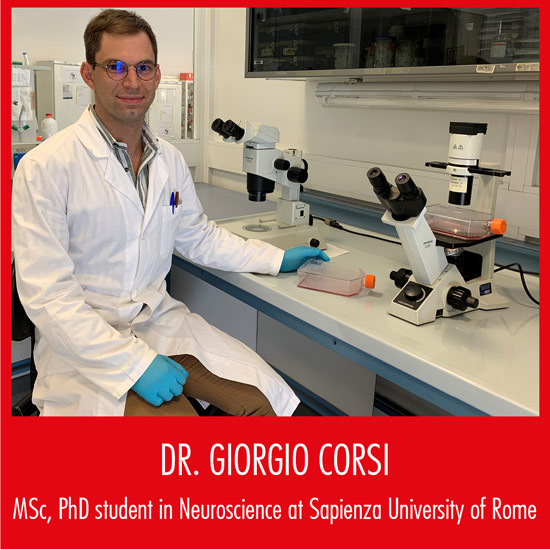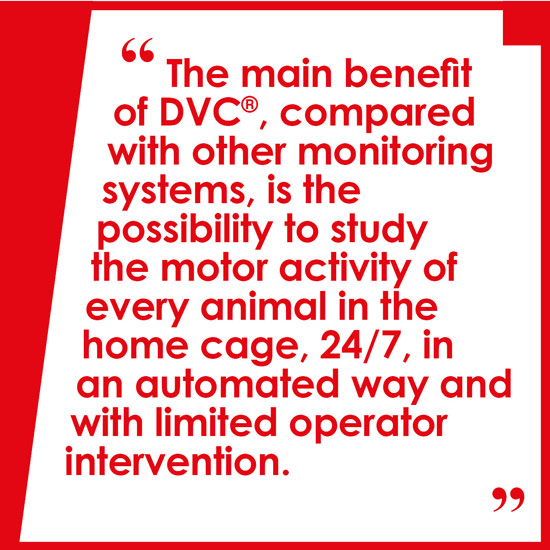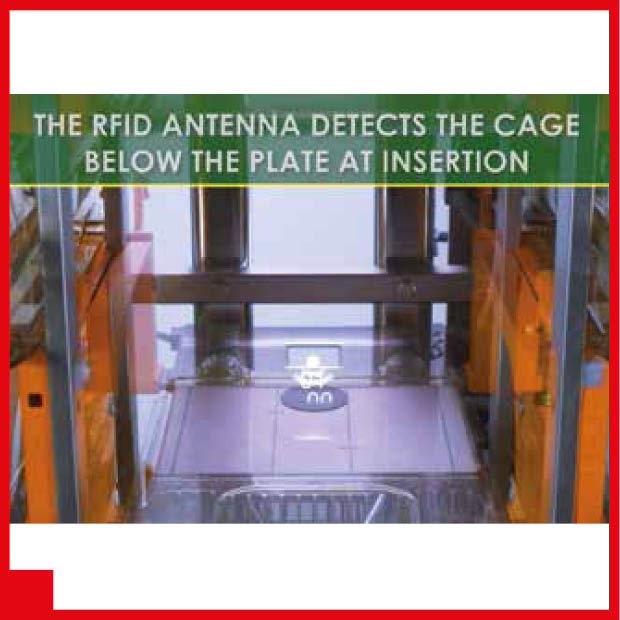
The current version of the Tecniplast website doesn't match your region. Please visit your local website to find information and offerings specific to your country.

The current version of the Tecniplast website doesn't match your region. Please visit your local website to find information and offerings specific to your country.

How DVC® System supports science to discover novel insights.

Dr Giorgio Corsi, MSc, PhD student in Neuroscience at Sapienza University of Rome, has recently participated as a speaker in one of the most important international 2019 Conferences for Lab Animal Science: The First Annual International Digital Forum, which has charted the course of innovation in LAS for the coming years. His presentation, entitled “Performing circadian studies directly in home-cage system”, was considered one of the most interesting by the audience.
Can you tell our readers the objective of the study and the conclusions?
The goal of our study, supervised by Prof. Cristina Limatola and Dr. Stefano Garofalo, is to understand the possible contribution of microglia, the immunocompetent cells of the central nervous system, in the regulation of sleep/wake cycle and circadian behavior. To this end, we investigated the circadian variations of microglial phenotype, and the circadian behavior of mice with defected microglia. Our results show that microglia display circadian variations in the gene expression patterns and cell morphology. Moreover, we show that alterations of microglial physiological state lead to an altered circadian motor activity.
Can you tell us how DVC® helped you to reach your objectives or the added value of the DVC® technology in your study?
One of our approaches consists of analyzing gene expression and cell morphology of microglia at specific timepoints during the day. Thanks to the collaboration with CNR and Tecniplast, we recently started using DVC® technology to monitor the motor activity of the mice for several days before the experiment. DVC® allowed us to know the circadian motor pattern of every mouse in the days before the experiment, and if the animals were during their rest or activity phase at the moment of the experiment. It was very useful for us to know the daily habits of the animals and if a specific animal was in its rest or activity phase at the moment of the experiment.

Do you think that the DVC® technology will define new boundaries in the research? Is it a real revolution?
The main benefit of DVC®, compared with other monitoring systems, is the possibility of studying the motor activity of every animal in the home cage, 24/7, in an automated way and with limited operator intervention. The real revolution is that DVC® allows researchers to automatically obtain useful data that are there, yet are usually not considered.
Do you think that PIs will have an added value with the data collected through the DVC® system? And if so, why?
Yes. Using the current monitoring systems, it is not possible to study motor behavior by directly observing the animal in the home cages, where the animals show a real spontaneous behavior. The animals are manipulated and moved into novel environments, thus increasing data variability, stress and interfering with their rhythmicity. Mice display several behavioral responses to manipulation and environmental conditions, which may change due to experimental circumstances. Automated home-cage monitoring technology like DVC® provides data without handling the animals or moving them into a novel environment. Such systems lead to improved animal welfare and experimental reproducibility.
Which research applications will have a major impact on the new DVC® technology?
The benefits listed above could be very helpful for all the circadian studies, since it is possible to monitor the activity during the whole day. Also, the benefits involve research on motor behaviors, like exploration or general motor activity, on animal habits, like eating and drinking, on preferences (light/dark, center/side, rearing/leaning, …), both for physiological and pathological studies. DVC® allows one to easily obtain a few simple data about motor activity, but the possibility of analysis of this data leads to a great variety of information about mice behaviors.
 Would you suggest that this technology will be adopted? For which applications and why?
Would you suggest that this technology will be adopted? For which applications and why?
My opinion is that DVC® not only could be very useful for research purposes, but also for animal welfare. Daily checks are either invasive or shallow, and often are limited to observing if the animal moves or breathes. DVC® allows one to evaluate and measure the motor activity 24/7, and, most importantly, its quality, thanks to the algorithms that can be applied to DVC® data. These algorithms enable us to easily and quickly detect abnormalities that may reflect unease or illness conditions.
Where do you see the DVC® technology in 10 years?
DVC® is a very efficient and effective system to study animal behavior when animals are kept in a familiar environment and are not manipulated. Data obtained are reliable and easy to analyze. Moreover, DVC® data can be manipulated to study several behaviors. As many ongoing studies will show in the near future, DVC® can be used to assess behaviors that currently need manipulation, animal transfers and many operator interventions.
Also, together with 24/7 monitoring of physiological parameters, DVC® will set new boundaries to animal welfare. My opinion is that DVC®, in 10 years, will change the way we think about studying animal behavior. Thanks to new metrics and algorithms, but mainly to the increasing number of research groups that are adopting DVC® for research purposes, every day new ways to obtain data and benefits from this technology become available.
GIORGIO ROSATI - SENIOR PRODUCT MANAGER DIGILAB - TECNIPLAST ITALY